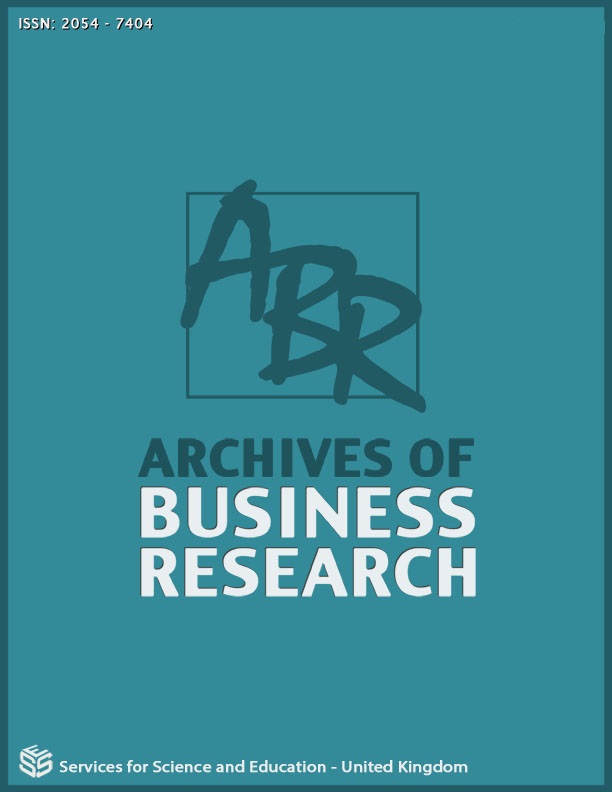ENTERPRISE RISK MANAGEMENT AND FIRM VALUE: EVIDENCE FROM STATE-OWNED ENTERPRISE IN INDONESIA
Keywords:
Enterprise Risk Management, Leverage, Profitability, Firm Value, Indonesia Stock ExchangeAbstract
This study aims to provide empirical evidence of the influence of enterprise risk management on firm value. This study also uses leverage and profitability as control variables. The research population is State-Owned Enterprises listed on the Indonesia Stock Exchange in 2020-2021. The sampling method used is the purposive sampling method, the number of samples according to the criteria of 40 annual reports. The data analysis tool used in this research is multiple linear regression analysis. The results of this study prove that enterprise risk management has a significant positive effect on firm value while leverage and profitability do not affect firm value.
References
Miihkinen, A. (2012, December). What Drives Quality of Firm Risk Disclosure?: The Impact of a National Disclosure Standard and Reporting Incentives Under IFRS. The International Journal of Accounting, 47(4), 437-468 https://doi.org/10.1016%2Fj.intacc.2012.10.005.
Lajili, K., & Zeghal, D. (2005). A Content Analysis of Risk Management Disclosures in Canadian Annual Reports. Canadian Journal of Administrative Sciences, 22(2), 125-142. https://doi.org/10.1111%2Fj.1936-4490.2005.tb00714.x
Cole, C., & Jones, C. (2005). Management Discussion and Analysis: A Review and Implications. Journal of Accounting Literature, 24, 135-174.
Solomon, J., Solomon, A., Norton, S., & Joseph, N. (2000). A Conceptual Framework for Corporate Risk Disclosure Emerging from the Agenda for Corporate Governance Reform. British Accounting Review, 32(4), 447-478. https://doi.org/10.1006%2Fbare.2000.0145
Dinoyu, M. F., & Septiani, A. (2020). Analysis of the Effect of Enterprise Risk Management Implementation on Company Performance and Value. Diponegoro Journal Of Accounting, 9 (4), 1-11.
Iswajuni, Soetedjo, S., & Manasikana, A. (2018). The Influence of Enterprise Risk Management (Erm) on Company Value in Manufacturing Companies Listed on the Stock Exchange. Journal Of Applied Managerial Accounting, 2 (2), 275-281.
Anggreni, N.K.A., Suprasto, H. B., Ariyanto, D., dan Suaryana, I.G.N.A. (2021). Disclosure of Enterprise Risk Management and Company Value: The Moderating Role of Age and Company Size. E-Jurnal Akuntansi, 31(11), 2867-2881.
Ismail, N., & Wijaya, C. (2021). The Effect of Enterprise Risk Management (ERM) on Firm Value (Case Study of BUMN Companies Listed on the Indonesia Stock Exchange (IDX) for the Period of 2015-2019). International Journal of Science and Research, 10 (7), 82-86.
Devi, S., Budiasih, I. G. N., & Badera, I. D. N. (2017). The Effect of Disclosure of Enterprise Risk Management and Disclosure of Intellectual Capital on Company Value. Jurnal Akuntansi Dan Keuangan Indonesia, 14(1), 20–45. https://doi.org/10.21002/jaki.2017.02
Pamungkas, A. (2019). Effect of Enterprise Risk Management (COSO) Implementation on Company Value: Empirical Study on Manufacturing Companies Listed on the IDX. Jurnal Akuntansi Maranatha, 11(1), 12 – 21.
Pamungkas, A.S., & Maryati, S. (2017). The Influence of Enterprise Risk Management Disclosure, Intellectual Capital Disclosure and Debt To Asset Ratio on Firm Value. Proceedings of Semnas IIB Darmajaya Research Institute, Learning Development & Community Service, October 25, 2017
Rivandi, M. (2018). The Influence of Enterprise Risk Management Disclosure and Corporate Governance on Company Value. Jurnal Benefita 3(2), 137-148.
Aditya, O., & Naomi, P. (2017). Implementation of Corporate Risk Management and Corporate Value in the Construction and Property Sector. Esensi: Jurnal Bisnis dan Manajemen, 7 (2), 167 – 180.
Fadilah, R., & Afriyenti, M. (2020). The Influence of Intellectual Capital, Tax Planning, and Disclosure of Enterprise Risk Management on Firm Value. Wahana Riset Akuntansi , 8 (1), 82-94.
Brigham, E. F., & Houston, J. F. (2009). Fundamentals of Financial Management: Twelfth Edition (12th ed.). Cengage Learning.
Verrecchia, R. E. (1983). Discretionary disclosure. Journal of Accounting and Economics, 5, 179–194. https://doi.org/10.1016/0165-4101(83)90011-3
Gitman, L. J. (2009). Principles of Managerial Finance (12th ed.). Pearson Prentice Hall.
Linsley, P., & Shrives, P. (2006). Risk Reporting: A Study of Risk Disclosures in the Annual Reports of UK Companies. The British Accounting Review, 38(4), 387-404. https://doi.org/10.1016%2Fj.bar.2006.05.002
Cabedo, J., & Tirado, J. (2004). The Disclosure of Risk in Financial Statements. Accounting Forum, 28(2), 181-200. https://doi.org/10.1016%2Fj.accfor.2003.10.002
ISO31000. (2018). BS ISO 31000: 2018 BSI Standards Publication Risk management — Guidelines. BSI Standards Publication. Retrieved from https://www.ashnasecure.com/uploads/standards/BS ISO 31000-2018.pdf
Schiller, F., & Prpich, G. (2014). Learning to organize risk management in organizations: What future for enterprise risk management? Journal of Risk Research, 17(8), 999–1017. https://doi.org/10.1080/13669877.2013.841725
Baxter, R., Bedard, J. C., Hoitash, R., & Yezegel, A. (2013). Enterprise Risk Management Program Quality: Determinants, Value Relevance, and the Financial Crisis. Contemporary Accounting Research, 30(4), 1264–1295. https://doi.org/10.1111/j.1911-3846.2012.01194.x
Hoyt, R. E., & Liebenberg, A. P. (2011). The Value of Enterprise Risk Management. Journal of Risk and Insurance, 78(4), 795–822. https://doi.org/10.1111/j.1539-6975.2011.01413.x
Beasley, M., Pagach, D., & Warr, R. (2008). Information Conveyed in Hiring Announcements of Senior Executives Overseeing Enterprise-Wide Risk Management Processes. Journal of Accounting, Auditing & Finance, 23(3), 311–332. https://doi.org/10.1177/0148558X0802300303
Meulbroek, L. K. (2002). A Senior Manager’s Guide to Integrated Risk Management. Journal of Applied Corporate Finance, 14(4), 56–70. https://doi.org/10.1111/j.1745-6622.2002.tb00449.x
Florio, C., & Leoni, G. (2017). Enterprise risk management and firm performance: The Italian case. British Accounting Review, 49(1), 56–74. https://doi.org/10.1016/j.bar.2016.08.003
Nurlela, R., & Islahuddin. (2008). The Influence of Corporate Social Responsibility on Company Value with Management Ownership Percentage as Moderating Variable. XI National Accounting Symposium, Pontianak.
Sukamulja, S. (2004). Good Corporate Governance in the Financial Sector: The Impact of GCG on Company Performance. Benefits: Jurnal Manajemen dan Bisnis, 8 (1), 1-25.
Lindenberg, E. B, & Ross, S. A. (1981). Tobin’s Q Ratio and Industrial Organization. Journal of Business. 54 (1), 1-32.
Chung, K. H. & Pruitt, S. W. (1994). A Simple Approximation of Tobin’s Q. Financial Management, 23 (3), 70-74.
Sulistyaningsih, & Gunawan, B. (2016). Analysis of Factors Affecting Risk Management Disclosure. Riset Akuntansi Dan Keuangan Indonesia, 1(1), 1–11.
Yogi, U., & Chariri. A ( 2014). “Determinants of Risk Disclosure in Non-financial Companies in Indonesia.”Diponegoro Journal of Accounting 3(3): 1–14.
Rose, C. (2016). Firm Performance and Comply or Explain Disclosure in Corporate Governance. European Management Journal, 34(3), 202-222. https://doi.org/10.1016%2Fj.emj.2016.03.003
Downloads
Published
How to Cite
Issue
Section
License
Copyright (c) 2022 Hudi Kurniawanto

This work is licensed under a Creative Commons Attribution 4.0 International License.






